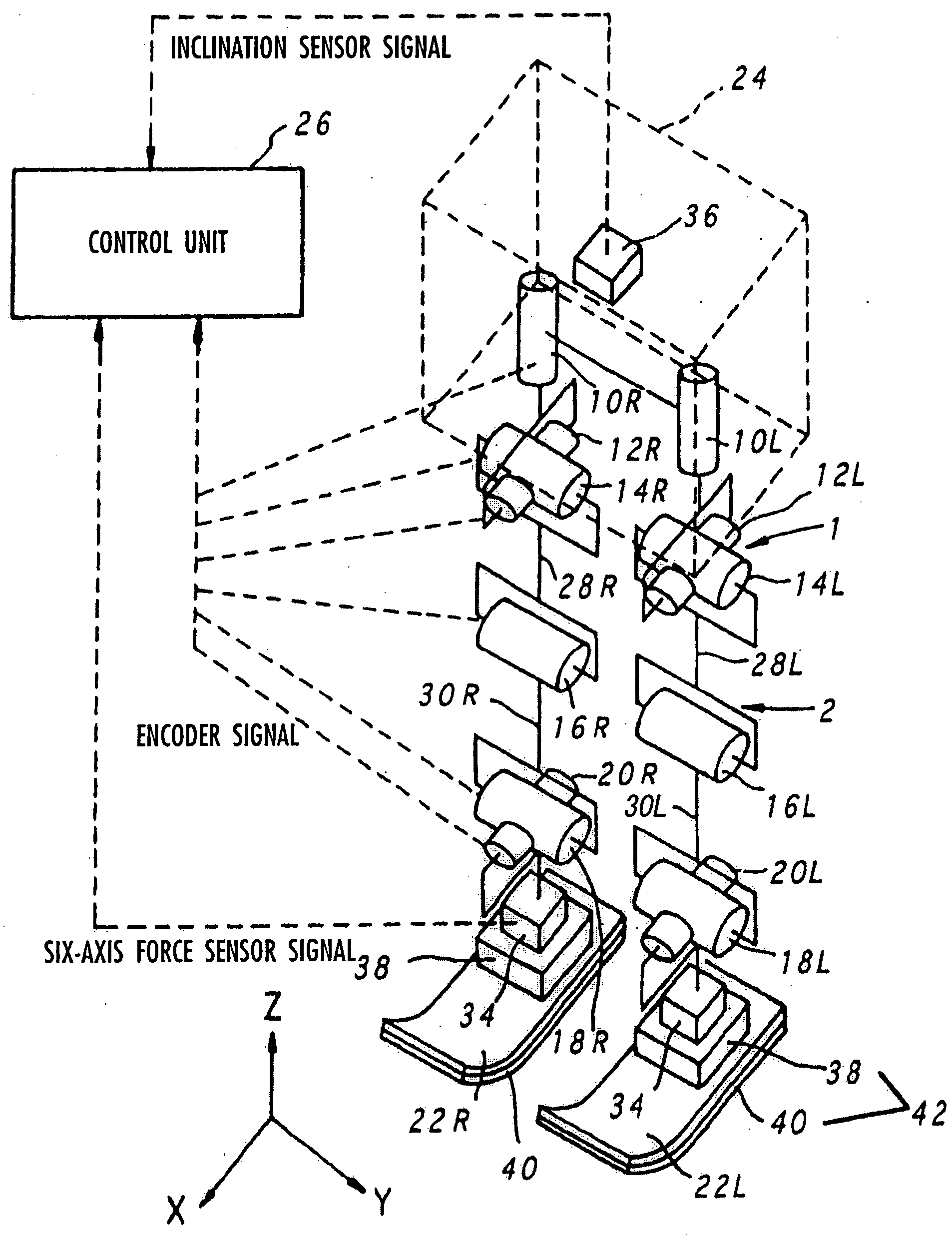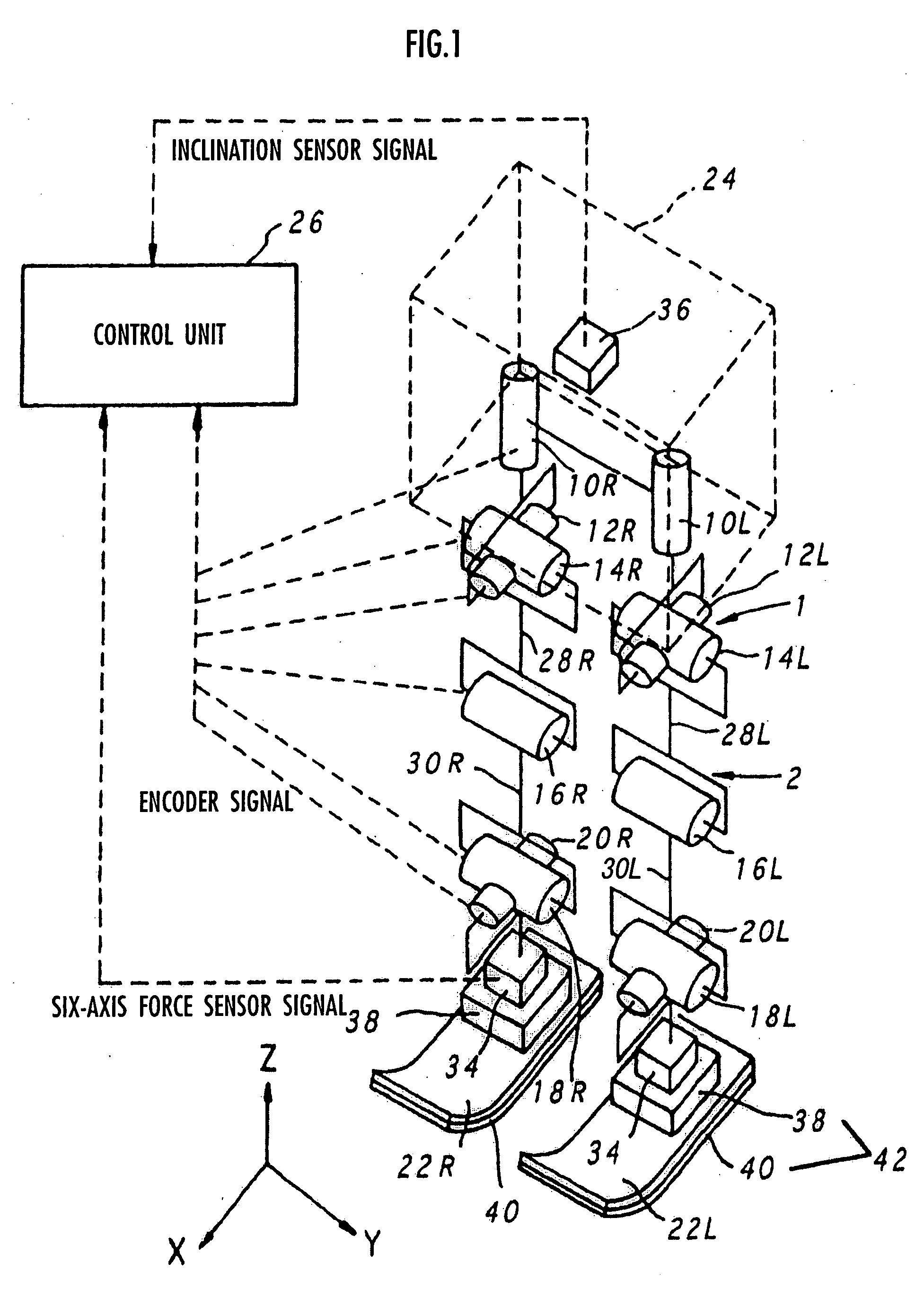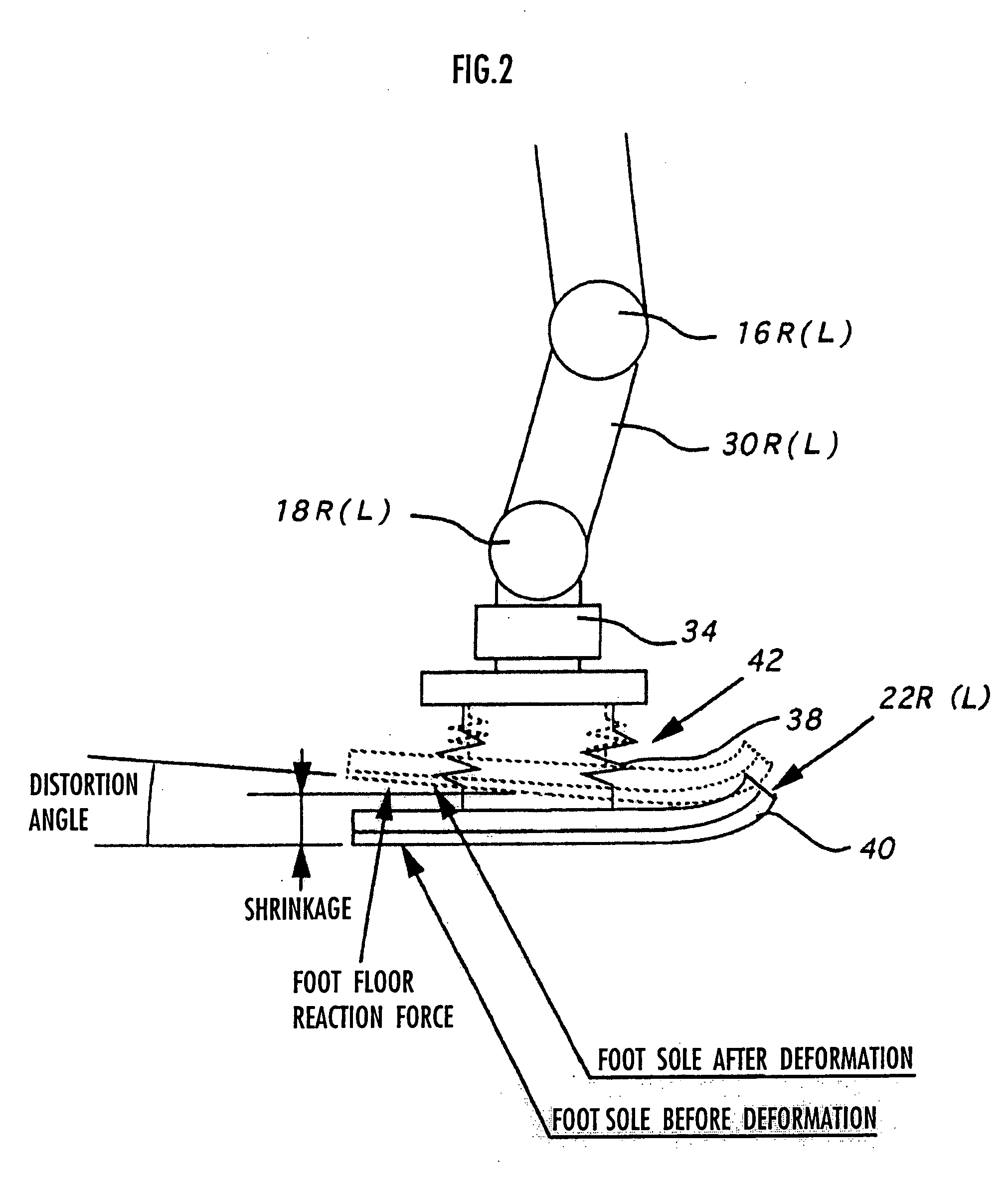Gait producing device for leg type movable robot
a technology of a generation device and a robot, which is applied in the direction of electric programme control, program control, instruments, etc., can solve the problems of robot slippage, robot reaction force's horizontal component of the desired gait exceeding the limit, and not always distinguishing between walking and running, etc., and achieves the effect of easy correction
- Summary
- Abstract
- Description
- Claims
- Application Information
AI Technical Summary
Benefits of technology
Problems solved by technology
Method used
Image
Examples
Embodiment Construction
In the following, one-embodiment of a gait generation device and a control device for a legged mobile robot according to the present invention will be described with reference to the drawings. In the embodiments of the present invention, a two-legged mobile robot is taken as an example of the legged mobile robot.
FIG. 1 is a schematic diagram showing a whole arrangement of a two-legged mobile robot, which is a legged mobile robot which uses a gait generation device and a control device according to an embodiment of the present invention.
As shown in the drawing, a two-legged mobile robot (referred to as a robot, hereinafter) 1 comprises a pair of left and right legs (leg links) 2, 2 extending downward from a body 24. The legs 2, 2 have the same construction and each have six joints. In the order of increasing distance from the body 24, the six joints include a hip (waist) joint 10R (10L) for convolution (rotation) (rotation in the yaw direction with respect to the body 24), a hip ...
PUM
 Login to View More
Login to View More Abstract
Description
Claims
Application Information
 Login to View More
Login to View More - R&D
- Intellectual Property
- Life Sciences
- Materials
- Tech Scout
- Unparalleled Data Quality
- Higher Quality Content
- 60% Fewer Hallucinations
Browse by: Latest US Patents, China's latest patents, Technical Efficacy Thesaurus, Application Domain, Technology Topic, Popular Technical Reports.
© 2025 PatSnap. All rights reserved.Legal|Privacy policy|Modern Slavery Act Transparency Statement|Sitemap|About US| Contact US: help@patsnap.com



